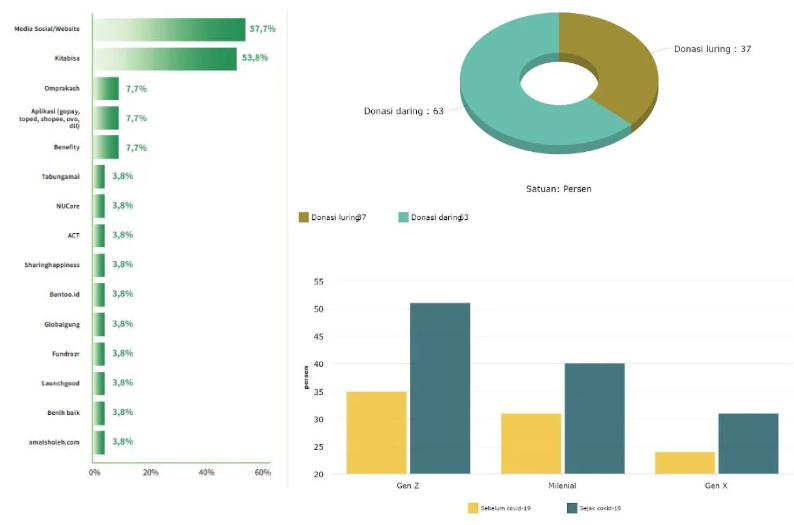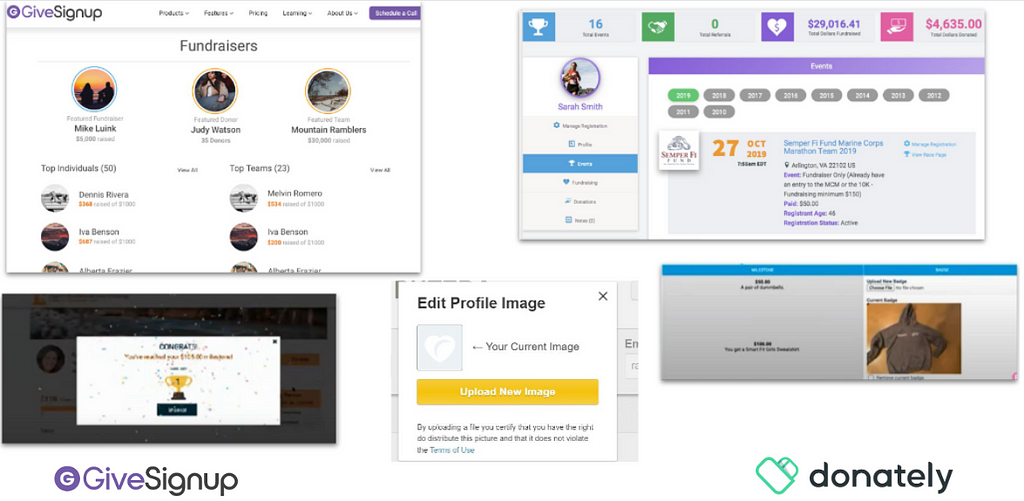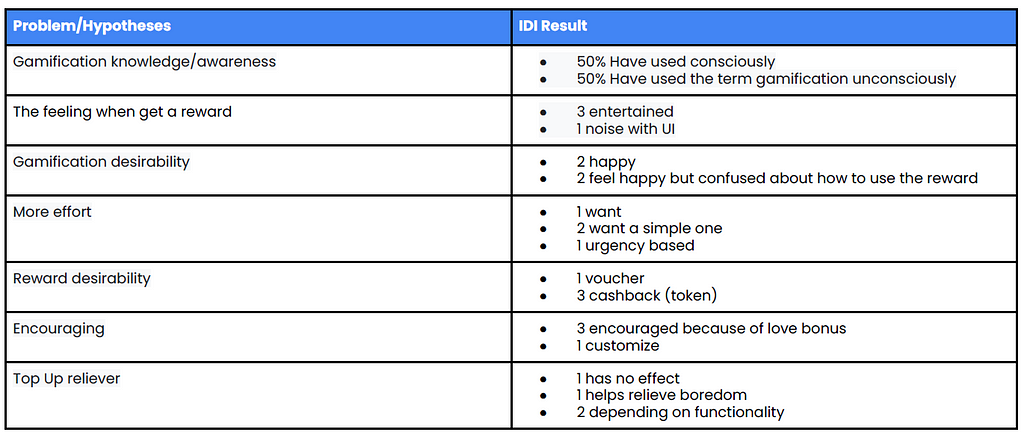PM/UX: Gamification meets the altruistic world of donation platforms
It becomes interesting when gamification filled with rewards and points wades into the altruistic world of donation platforms

Donation-Based Crowdfunding Platform in Indonesia ♥️
In simple terms, the mechanism of this platform is to accommodate fundraisers, people in charge/platform, campaigns, and donors. The fundraiser together with the person in charge creates a campaign on a platform aimed at potential donors and then the potential donor will determine their choice to donate or not, then the results of the donation are distributed by the fundraiser and the person in charge/platform.
Donation platforms are used to raise funds by individuals to support many charitable projects on the internet (Golrang & Safari, 2021).
Donation platforms have the potential to enhance social development, especially in developing countries (Wash, 2013).
The presence of charitable organizations that house donation platforms can also help those in need apart from government efforts (Zhang et al., 2020).
In the donation model, the donor supports the project financially without a promise to receive any form of return (Messeni Petruzzelli et al., 2019).
Fintech innovations that were previously carried out offline now can be carried out online. The practice of donation-based crowdfunding is no exception. This is proven by the presence and growth of well-known donation sites in Indonesia.
Based on the IDN Research Institute Report (2019), 7 well-known donation sites in Indonesia include Dompet Dhuafa, Ayo Peduli, Kitabisa, Gandeng Tangan, Wujudkan, Aksi Cepat Tanggap, and Peduli.
Donation categories on donation-based crowdfunding platforms in Indonesia include educational assistance, the environment, social activities, public infrastructure, MSMEs, animals, places of worship, disabled people, orphanages, zakat, and waqf.
I have summarized the donation phenomenon that occurred in Indonesia:

Indonesia has been named the most generous country in the world in 2020 by the Charities Aid Foundation (CAF) (WGI, 2021). Indonesia occupies the top two rankings of the three categories or indicators used by the WGI, namely donating to foreigners, donating money, and volunteering.
In Indonesia, the majority of donations have not maximized the use of digital media. The results of the Philanthropy Outlook report (2022) show that the majority or 76.6% of philanthropic organizations in Indonesia use non-digital media to raise donations. Meanwhile, the majority of digital channels used by fundraisers are social media and websites rather than the donation platform itself.
There has been a potential increase from the donor side, research entitled GoPay Digital Donation Outlook 2020 states that digital donations have increased in generations Z, millennials, and X, especially during the COVID-19 pandemic. The COVID-19 pandemic that occurred has changed the way people make donations from conventional to digital (Kopernik & Gopay, 2020).
Databoks (2021) reveals that the majority of people choose online donations during Ramadan, whereas only 37% of respondents decide to donate offline.
Guesstimation: With the explanations phenomena above, it can be estimated that there is a very potential market for donation platforms in Indonesia. What needs to be considered is how to disrupt the conventional donation market. Apart from ease and usability of use, and platform trust, can gamification influence the development of donation platforms in Indonesia?
Gamification 🎮
Gamification is known as the use of game design elements/dimensions in non-game contexts to make products, services, or applications more attractive and enjoyable to motivate and increase user activity and retention.
The challenge in using donation platforms is low user participation and low user engagement (Golrang & Safari, 2021).
According to Golrang & Safari (2021), increasing user participation can be achieved with gamification.
Gamification is expected to encourage users to participate in campaigns aimed at increasing potential opportunities to fund charitable projects.
Gamification has the following dimensions and elements:

Gamification on Donation-Based Crowdfunding Platform in Indonesia 💎
As has been mentioned, Indonesia was named the most generous country in the world by the Charities Aid Foundation (CAF). This one thing can reflect that Indonesian people have a highly altruistic attitude.
Donating money can be considered a sacrifice, what motivates such altruistic acts is often the belief that there will ultimately be rewards in the future (C.-J. Liu & Hao, 2017).
“Riya” is an Arabic term that delineates actions undertaken by an individual with the intention of securing admiration, acknowledgment, or recognition from others, yet executed with insincere or hidden motives. In the realm of religion, especially in Islam, riya embodies hypocritical conduct, wherein an individual showcases acts of virtue or piety not purely to deepen their connection with God but rather to elicit praise or approval from their fellow human beings.
Currently, gamification on donation platforms in Indonesia has not been widely implemented, some of which are still in the form of a Minimum Viable Product (MVP), therefore it is important to determine whether gamification has an effect on the use of donation platforms and how to determine the right dimensions or elements of gamification before going any further.
Below is an example of the use of gamification dimensions on a crowdfunding-based donation platform:


Based on the research model that I have carried out, it was found that gamification has a significant influence on the crowdfunding mechanism, but does not have a significant influence on behavioral intention
Even though the presence of gamification does not cause potential users to adopt the platform, gamification itself can help increase user engagement/retention and increase the nominal amount in making donations by adding a game element to the fundraising process.
This can answer that in Indonesia, despite having a high altruistic spirit, gamification still can help increase the use of donation-based crowdfunding platforms.
The Frameworks 🔎
The weakness of the gamification design that causes failure is the designer who does not pay enough attention to the proper gamification context to determine the use of gamification dimensions and elements (Golrang & Safari, 2021).
1. Gamification Model Canvas
The Gamification Model Canvas presents gamification design as an iterative and gradual process involving nine main stages.

2. Kano Model
The Kano model is a model that can be used to identify consumer satisfaction, where this model aims to categorize the attributes of a product or service based on how well the product or service can satisfy customer needs, which was developed by Dr. Noriaki Kan.
Below is my use of the Kano Model in designing gamification:






Based on the example above, the gamification elements that need to be included are challenges/tasks, rewards, and a progress bar.
What is difficult is combining gamification elements, for example by providing challenge/task elements, of course, there must be rewards or achievements. Maybe it would be better in my suggestion to combine several gamification elements or review them from the gamification dimension.
3. VIKOR
VIšekriterijumsko KOmpromisno Rangiranje (VIKOR) method focuses on ranking and choosing from a set of alternatives and determining compromise solutions (mutual concessions) to problems with different criteria, which can help decision-makers reach a final decision.

The research I conducted using the VIKOR method obtained the following results:
- Provide personalization features on the donation platform so that users can adjust their preferences and needs when using the platform (Rank 1)
- Provides a system of challenges, badges, and achievements for users as rewards and prestige (Rank 2)
- Integrates social sharing features that allow users to share social projects and donation records on donation platforms to users’ social media (Rank 3)
Lessons Learned ✨
- Gamification Meets the Altruistic: Despite being highly altruistic in society, gamification can be used as a strategy to overcome challenges such as low user participation and engagement. However, the design of gamification must still take into account the altruistic characteristics of society. It is hoped that altruism and gamification support each other to achieve the goals of the donation platform. Altruistic provides the primary motivational basis, while gamification provides tools to optimize the donation process and increase user engagement.
- Gamification Design: Designers should pay careful attention to the specific context in which gamification is applied, ensuring a thoughtful selection of dimensions and elements. In Indonesia as a highly altruistic and religious country, perhaps the most suitable gamification element is achievements/badges because they are only useful for self-satisfaction, not “Riya”.

References
Bączkiewicz, A. (2021). MCDM-based e-commerce consumer decision support tool. Procedia Computer Science, 192, 4991–5002. https://doi.org/10.1016/j.procs.2021.09.277
Golrang, H., & Safari, E. (2021). Applying gamification design to a donation-based crowdfunding platform for improving user engagement. Entertainment Computing, 38, 100425. https://doi.org/10.1016/j.entcom.2021.100425
Liu, C.-J., & Hao, F. (2017). Reciprocity belief and gratitude as moderators of the association between social status and charitable giving. Personality and Individual Differences, 111,
46–50.
Messeni Petruzzelli, A., Natalicchio, A., Panniello, U., & Roma, P. (2019). Understanding the crowdfunding phenomenon and its implications for sustainability. Technological Forecasting and Social Change, 141, 138–148. https://doi.org/10.1016/j.techfore.2018.10.002
Palmer, D., Lunceford, S., & Patton, A. J. (2012). The engagement economy: How gamification is reshaping businesses. Lulu Press.
Wash, R. (2013). The Value of Completing Crowdfunding Projects. 9.
Zhang, Y., Tan, C. D., Sun, J., & Yang, Z. (2020). Why do people patronize donation-based crowdfunding platforms? An activity perspective of critical success factors. Computers in Human Behavior, 112, 106470. https://doi.org/10.1016/j.chb.2020.106470
Gamification meets the altruistic world of donation platforms was originally published in UX Planet on Medium, where people are continuing the conversation by highlighting and responding to this story.